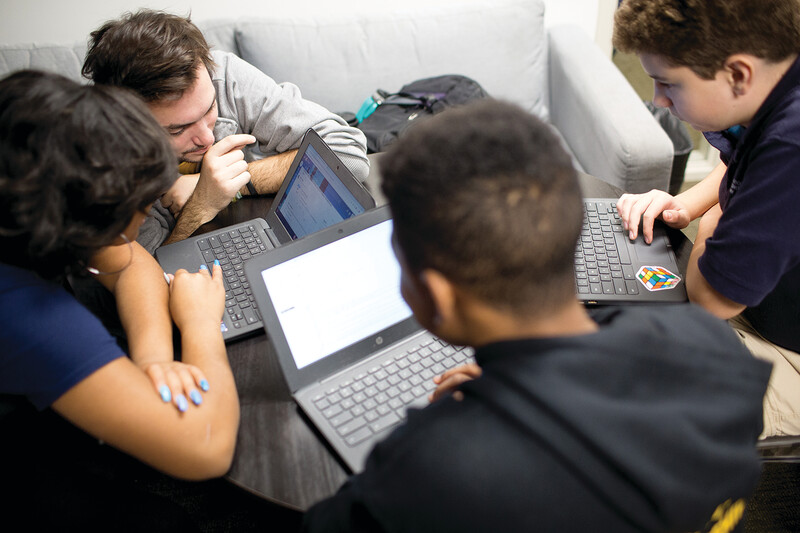Reshma Saujani is the founder and CEO of Girls Who Code, a nonprofit dedicated to closing the gender gap in technology education and careers by introducing girls to computer science and coding in after-school and summer programs. GWC has reached 90,000-plus girls in all 50 states. Saujani is author of three books, including Brave, Not Perfect (Crown Publishing, 2019).
What is the mission of Girls Who Code—and why is it crucial to close the gender gap in technology?
Our mission is to close the gender gap in tech, plain and simple. Computing is where the jobs are and where they will be in the future, but fewer than one in five computer science graduates are women, and women make up only about 20 percent of the computing workforce in the United States. That means that the people who are creating the technology we use every single day aren't representative of all of their users. Not only that, we're missing out on half of the possible innovations and ideas that we could be seeing. It's time to make sure that women are included in the jobs that are creating our future.
You've said that when you would visit schools as a speaker, you'd see few girls in computer science classes or robotics teams—yet for your first Girls Who Code groups in 2013, demand was strong. Why do you think girls weren't signing up for CS in schools?
There's a huge gap between the numbers of girls taking CS classes in schools and the demand for our programs—and it has everything to do with a sense of belonging. Back when computer science was just getting started, women were on pretty equal footing with men in terms of representation. But when it became clear that computers were where the power—and the money—were going to be, women were pushed out. We started seeing only men and boys in our movies and TV shows about technology.
Fast forward to the early 2010s and you've got 30-plus years of girls being shown that they don't belong in those classrooms. You can't be what you can't see—and it's hard to be the only girl in a room full of boys! We've heard from so many of our alumni that Girls Who Code gave them a chance to feel like they could try and fail without feeling like the world was ending, like they could raise their hand or give an answer they weren't sure about. It's through these gender-specific spaces that we can offer girls a space to experiment and learn to love computer science—and then change the world.
Would it be good for schools to have some girls-only options to learn computer science and coding?
We believe it's hugely important to give girls gender-specific spaces to learn code. This way, they can focus on learning to code, rather than questioning whether they belong or whether they'll succeed.
How do you present and teach coding in Girls Who Code groups?
Our curriculum is project-based, so girls are able to plug into the activities and learn to code by doing. They might be making an app about fashion or a website about climate change. Whatever they love, they can do something good with code. We've brought the power of coding to 90,000 girls across the United States—and it's working. So far, we have about 13,000 college-aged alumni of our programs, and they're choosing to major in computer science and related fields at 15 times the national averages. We're building a pipeline from elementary school through college for girls to enter and thrive in the tech field, and we couldn't be more excited to see what the future holds for them.
If you could recommend one change in how coding is presented in elementary grades, what would it be?
One of the best ways to spark girls' interests at a young age is by showing them that girls do code, and they have done some pretty incredible things. We incorporate our women-in-tech lesson plans into our Girls Who Code Clubs curriculum to show girls that women like Grace Hopper, Ada Lovelace, Ayanna Howard, and so many others have made a difference using technology. And it's easy for teachers to bring that same resource into their elementary and middle school classrooms because we've made the lesson plans free on our website.
Having helped 90,000-plus girls explore coding and do projects applying it, what have you discovered about how girls—in general—approach coding?
I think that girls really want to change the world! When they're learning how to code, our girls will pick projects that make an impact in their communities and help people. Andy and Sophie created an app called Tampon Run to raise awareness about menstruation issues and break the taboo for girls. Michelle and Cassandra built an app that offers resources for preventing sexual assault. Maya and Lucy created a website to bring awareness to the water crisis in Flint, Michigan. When you teach a girl to code, she'll absolutely change the world.
Editor's note: This interview has been edited for space.








